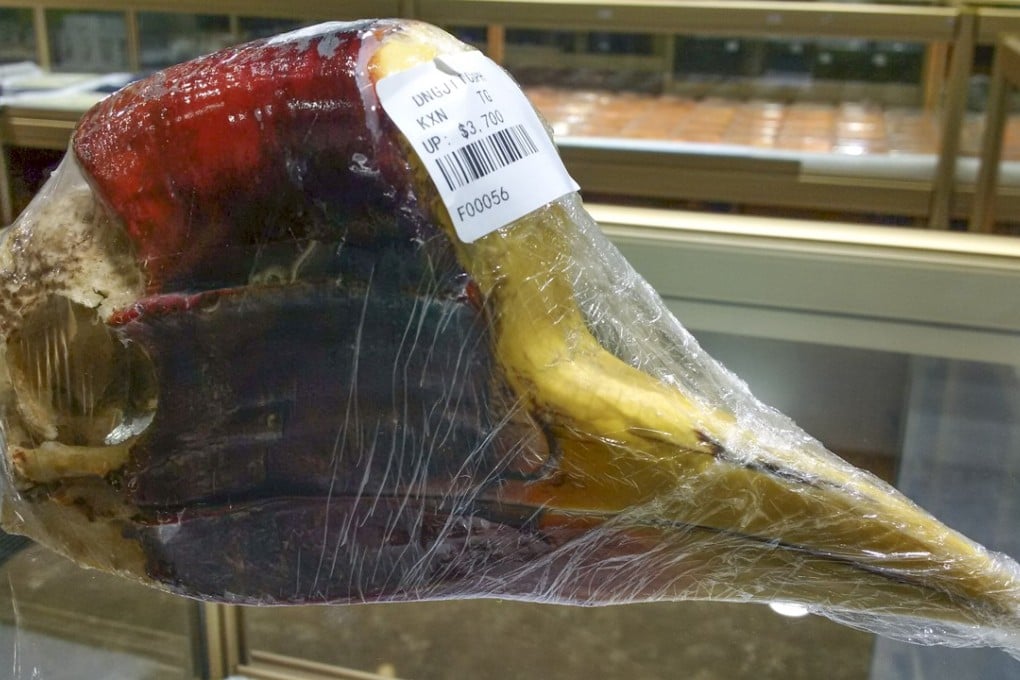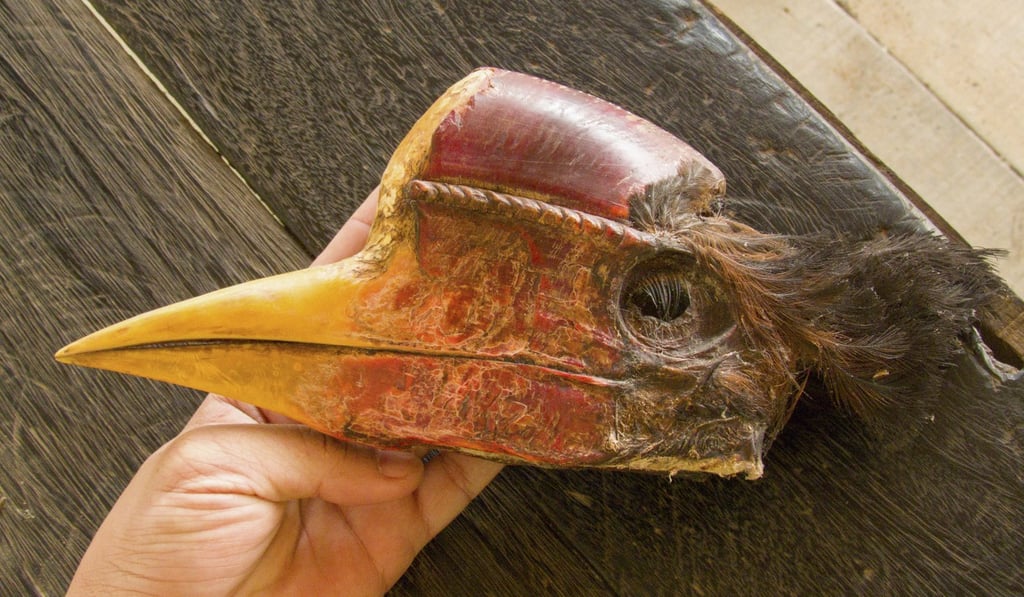Why Chinese demand for ‘red ivory’ dooms helmeted hornbill bird to extinction unless poaching can be stopped
Sought after on the black market for their casques, these strange-looking birds - native to Southeast Asia - are close to being wiped out to satisfy human greed

The international trade in illegal wildlife parts has another victim. Over the past five years, there has been an explosion in demand for the “red ivory” of an Asian bird – the helmeted hornbill.
Helmeted hornbill products sell for three to five times the price of elephant ivory. Their value has triggered a boom in poaching, sending the bird plunging towards extinction. Although it has been listed in Appendix 1 of the Convention on the International Trade in Endangered Species in Wild Flora and Fauna (CITES) since the 1970s – which means the trade is illegal – the helmeted hornbill is much sought after on the black market, and Post Magazine has discovered that Hong Kong plays a key role in the unfolding tragedy.
The helmeted hornbill lives in remnant pockets of lowland rainforest in Indonesia, Malaysia, southern Thailand and the southern tip of Myanmar. A large, bonkers-looking bird, with a featherless, wrinkly neck (aqua blue in females, cherry red in males), and striking, black-and-white tail feathers, its dramatic call – think of the cackling laughter of a horror film maniac – was once a common sound in the rainforest.

The “helmet”, for which the bird is hunted, is a solid lump, called the casque, fused along the top of its dark yellow bill and up onto the skull. The casque gets its golden red hue from protective tinted oils secreted by preen glands. Many species of hornbill have casques but most are hollow – the helmeted hornbill’s is unique because it is solid. The casque material is called “red ivory” but that’s a misnomer. Ivory is made of dentine whereas casques are made of keratin, the fibrous protein found in human hair and fingernails and rhino horn.
The casque is thought to have evolved because of the male birds’ extraordinary habit of engaging in aerial headbutting contests. Two combatants perch on different trees, take flight, and hurtle towards each other until they bang heads, producing a loud cracking noise. The jousts can go on for hours. Scientists are unsure whether they are competing for access to fruit trees or to females, but one theory suggests that the boys butt heads for longer when they have eaten too many alcohol-laced fermented figs.